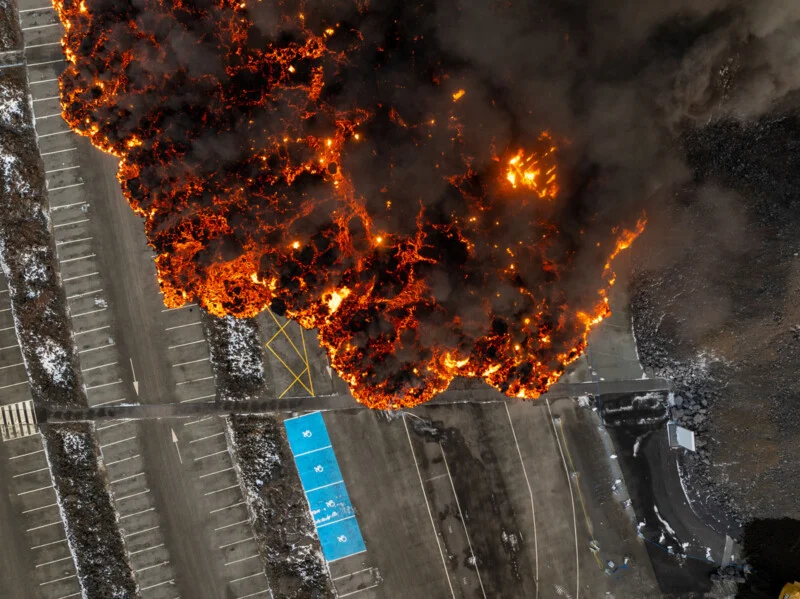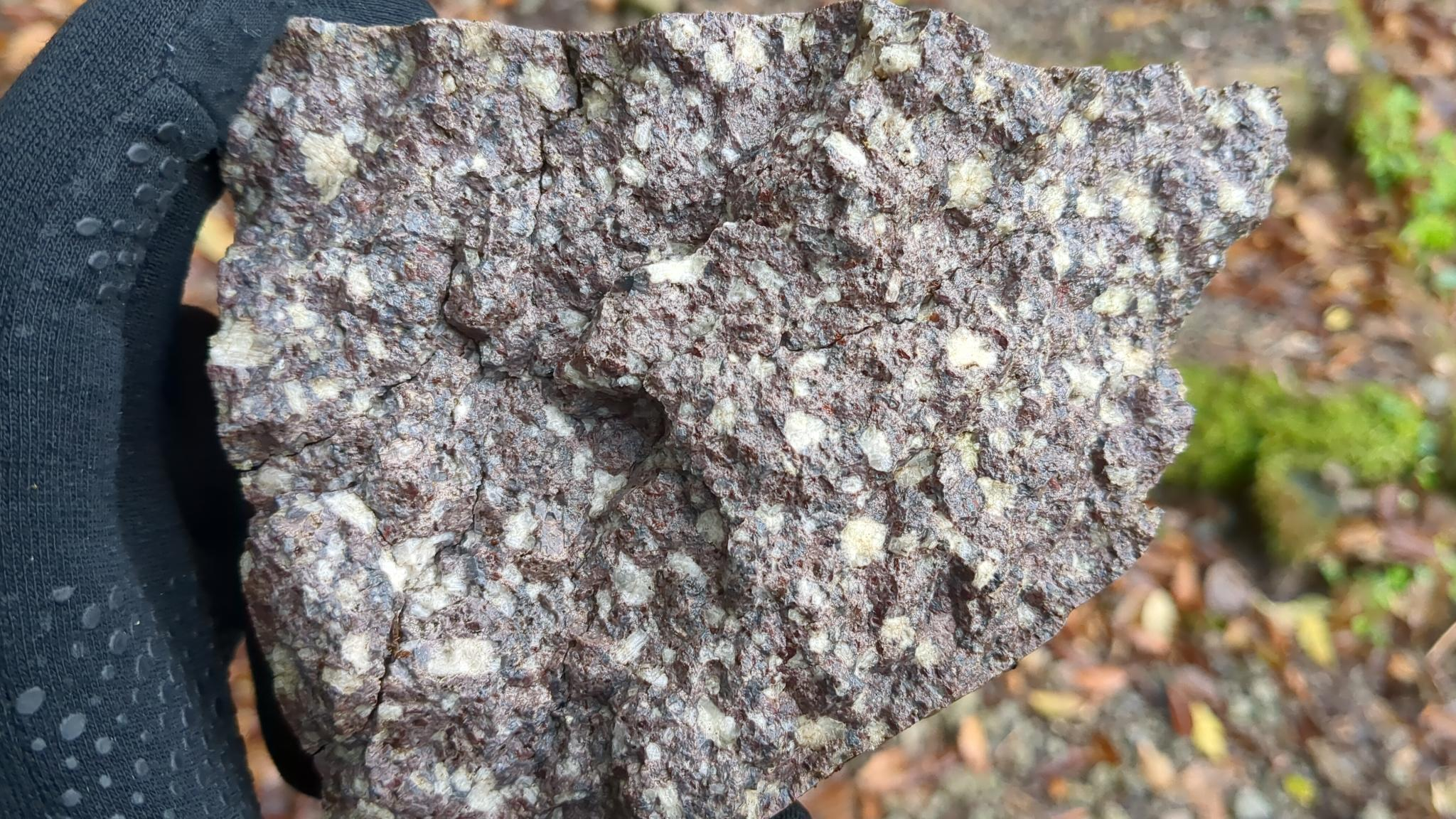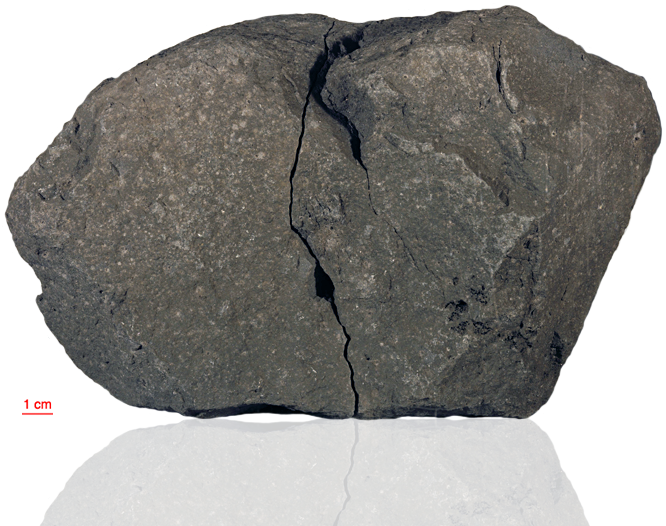Amateur Volcanology
In the last year, I’ve passed close to a couple of volcanoes, one of which is known for exploding violently and killing people, and one of which is not. I decided to try to understand a little bit about why. Epistemic status: iffy. Trying to be correct, but not my area of expertise.
Mt. Unzen is in the western part of Kyushu, Japan, on the Shimabara peninsula between Nagasaki and the shallow waters of the Ariake Sea. Over the past few hundred years, it’s occasionally vented its displeasure at the surrounding countryside through pyroclastic flows and lahars, most recently in 1991, where it destroyed a portion of the nearby town of Shimabara and killed a husband-and-wife volcanologist team who were working on the mountain itself. This vented enough energy that the system will likely be quiet for another century, though it remains geologically active enough to keep the nearby hot spring resort towns in business.
A planet away, Eldvörp–Svartsengi is a complicated system of fissures and craters on the Reykjanes Peninsula. It’s near the town of Grindavik, a few kilometers south of the highway that connects Iceland’s capital, Reykjavik, to its international airport at Keflavik. After centuries of inactivity dating back to the late Icelandic Commonwealth (1)Iceland’s early period of indigenous self-government, noteworthy for its functionally anarchist character, including enforcement of civil and criminal suits by trading enforcement rights on an open market. , volcanic activity on the peninsula resumed in 2021. The volcano complex is now busily trying to consume Iceland’s favorite geothermal power plant runoff based luxury spa, the Blue Lagoon (2)Assuming it hasn’t been immolated by the time you’re reading this, the Blue Lagoon is a nice way to cap off a circumnavigation of Iceland before you fly out. Stop by for a dip and a silica clay face mask. , although slowly enough that no lives are in danger.
Figure: Lava trashes the Blue Lagoon parking
lot, courtesy of Vilhelm Gunnarsson/PetaPixel
(https://petapixel.com/2024/11/26/photographer-captures-volcanic-lava-destroying-parts-of-icelands-blue-lagoon/).

This made me curious: they’re both dramatic in their own way, but why is one so much more explosive? They’re both holes in the Earth’s crust in some sense, so why is the behavior so different? It turns out the explanation makes a surprising amount of intuitive physical sense.
Unzen’s magma is predominantly dacite-based (Hoshizumi, Uto, and Watanabe 1999). This means it has a large proportion of silicates. You can actually see this, just from wandering around. If you pick up a random rock anywhere from the peak on Fugendake to the town around Unzen, you’re likely to see a black-or-red matrix with a number of white large crystals of plagioclase.
Figure: Dacite sample from near Yadake. The
large white crystals are silicate, presumably plagioclase, though some
of them might also be quartz- my mineralogy is pretty weak.

The functional impact of this is to make the lava at Unzen far thicker,
and more viscous, than the lava you might find around the Reykjanes
Peninsula, which is essentially nothing but basalts.
 Specifically, Svartsengi produces picrite and tholeite basalts, with
relatively more iron and magnesium, and with plenty of olivine. This is
not too dissimilar from the basalts found in the lunar mares, or “seas”
(Jaumann et al. 2012), which adds to the Icelandic terrain’s terrain’s
already extraterrestrial character. Image shows Apollo 17 Sample
70215.306, a sample of mare basalt collected from Mare Serenitatis by
Gene Cernan.
Specifically, Svartsengi produces picrite and tholeite basalts, with
relatively more iron and magnesium, and with plenty of olivine. This is
not too dissimilar from the basalts found in the lunar mares, or “seas”
(Jaumann et al. 2012), which adds to the Icelandic terrain’s terrain’s
already extraterrestrial character. Image shows Apollo 17 Sample
70215.306, a sample of mare basalt collected from Mare Serenitatis by
Gene Cernan.
In a nutshell, this is our answer: the thicker viscosity means that Unzen is better at building up energy, pressurizing lava domes under stacked layers of historical magma that have piled up until everything bursts cataclysmically. Meanwhile, the thinner, less viscous Icelandic lava slips through fissures and dissipates energy more easily, creating quick-moving flows and occasionally spectacular fountains, but nothing like the spectacular explosions and pyroclastic flows of a stratovolcano.
I found this pretty physically intuitive- the image that came to mind was a pot boiling on a stove. If you boil water, for pasta perhaps, you can pretty happily have it at a rolling boil with the lid off, as long as it doesn’t begin to bubble over: the individual bubbles of water vapor form and pop on the surface with relatively little energy. As you move to something thicker, like a tomato sauce, you have to be increasingly careful. Eventually, no matter what you do, the resulting bubbles will live longer and store correspondingly more energy before finally bursting dramatically, flinging hot liquid at your face and applying Friday The 13th effects to your shirt.
If we accept this simple model- silicates lead to thicker lava, and thicker lava leads to more violent charge-discharge cycles- then we have an explanation. A follow-up question is why there are more silicates in Kyushu than in Reykjavik. I expected the answer to be relatively unsatisfying, but it turns out that also makes sense, and has to do with the fundamental differences in the fault boundaries that birthed the corresponding volcanoes.
Southern Japan sits along the edge of two tectonic plates: the Eurasian Plate and the Philippine Sea Plate. The Philippine Sea Plate subducts below the Eurasian plate, with the thinner ocean crust getting pressed down under the continental crust (3)Not that far away, a similar interaction with the Pacific Plate creates the thalassophobia-inducing Mariana Trench. . As it does so, it carries water minerals down, deeper into the Earth’s crust.
This water actually acts as a flux, making it possible for rocks to melt at a higher temperature than they otherwise might. This preferentially melts silica-rich rocks, creating a silica-rich magma, which pushes up toward the surface. This concentrates further as it slowly works its way up through the continental crust, pooling in chambers and cooling somewhat. This encourages less silica-rich minerals to preferentially condense out. By the time the magma arrives at the surface, its reduced to perfection, silicated and goopy, and ready to create volcanoes. (4)This process recurs all around the Pacific Rim, creating the many volcanoes of the so-called Ring of Fire. .
Iceland, while also a volcanic island like Kyushu, is born of essentially the opposite process: the North American and Eurasian plates pulling apart, creating the Mid-Atlantic Ridge. This creates the rift valley of Þingvallavatn, (5)Site of the Þingvellir, Iceland’s original national assembly/parliament. where sharp, narrow crevices slit the countryside as the land is slowly torn apart, a couple of centimeters a year. On the surface, these cracks create dramatic scarps and deceptively deep creeks filled with icy-cold glacial runoff, but this cracking runs all the way down through the crust to the Mohorovičić discontinuity. The Moho, as it’s known to aficionados, is a sudden shift in seismic reflectivity anywhere from 5-90 km down that we now treat as the boundary between the crust and the mantle. Magma pools in reservoirs near this boundary and then, taking advantage of the cracks and crevices from the rift zone, shoots up to the surface in a time span of weeks (Halldórsson et al. 2022).
This magma is direct from the mantle, rather than subduction melt, and as fresh as can be, giving us a basaltic, highly viscous lava, and on the surface, fountains and flows but no earth-shattering kaboom.
And so that wraps up the story, at least for now. I haven’t looked into why silica-rich magmas are more viscous (I’m guessing the materials science there is understood, and probably interesting, but it’s something for another day), or how magma reservoirs end up forming along the Moho.
The basic idea, though, is surprisingly straightforward: the two volcanoes’ character is determined by the differences in the magma flowing through them, and the composition of the magma in turn depends on the basic plate tectonics that produce them.
The answer to “why does one explode and one not” isn’t a trivial one-liner, but it also isn’t hopelessly arcane. A bit of grade-school geology, a bit of intuitive physics around heat and fluids, and enough geology to identify a rock or two: put them together, and it’s enough to understand something about the world around us.
I like things like that.
References #
Halldórsson, Sæmundur A., Edward W. Marshall, Alberto Caracciolo, Simon Matthews, Enikő Bali, Maja B. Rasmussen, Eemu Ranta, et al. 2022. “Rapid Shifting of a Deep Magmatic Source at Fagradalsfjall Volcano, Iceland.” Nature 609 (7927): 529–34. https://doi.org/10.1038/s41586-022-04981-x.
Hoshizumi, Hideo, Kozo Uto, and Kazunori Watanabe. 1999. “Geology and Eruptive History of Unzen Volcano, Shimabara Peninsula, Kyushu, SW Japan.” Journal of Volcanology and Geothermal Research 89 (1–4): 81–94. https://doi.org/10.1016/s0377-0273(98)00125-5.
Jaumann, R., H. Hiesinger, M. Anand, I. A. Crawford, R. Wagner, F. Sohl, B. L. Jolliff, et al. 2012. “Geology, Geochemistry, and Geophysics of the Moon: Status of Current Understanding.” Planetary and Space Science 74 (1): 15–41. https://doi.org/10.1016/j.pss.2012.08.019.